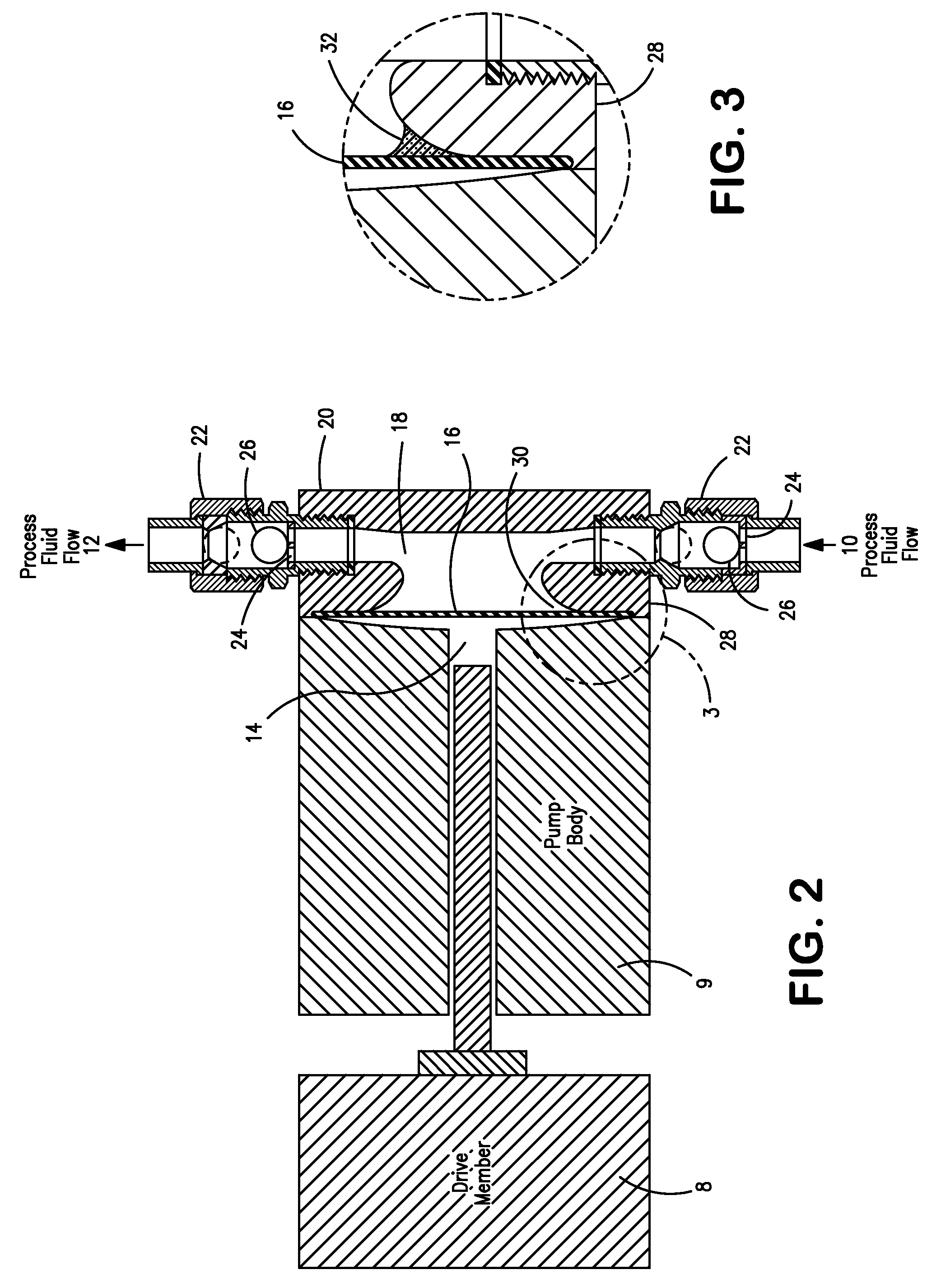Diaphragm pumps and transporting drag reducers
a technology of diaphragm pumps and reducers, which is applied in the direction of positive displacement liquid engines, engine diaphragms, machines/engines, etc., can solve the problems of pipelines that limit the amount of pressure that can be employed, the problem of fluid pressure dropping is typically occurring, and the problem of pressure drop is the most acute problem. to achieve the effect of reducing the pressure drop
- Summary
- Abstract
- Description
- Claims
- Application Information
AI Technical Summary
Benefits of technology
Problems solved by technology
Method used
Image
Examples
example 1
No Barrier Material Test
[0036]This Example demonstrates pumping Latex A through an HPD pump with no barrier material. The results, shown in FIG. 4, show numerous large and sudden decreases in pumping rate which are indication that the pump discharge check valve is being plugged or partially blocked. The pump test was stopped after about four days to examine the solids. These “blips” in rate were as short as a couple of minutes to as long as a few hours. Upon dismantling the pump head, a visual inspection of the pump head showed a significant amount of polymer film on the diaphragm. This film appeared to be breaking off the pump head and moving through the discharge check valve.
example 2
Polyurethane Barrier Material Test
[0037]This Example demonstrates pumping Latex A through an HPD pump with PL® Polyurethane Door, Window and Siding Sealant, marketed by Henkel Corporation as the barrier material. The results, shown in FIG. 5, show improved pumping stability. The pump test was stopped after about four days to examine the solids. A visual inspection showed polymer film had formed on the barrier material in locations where the barrier material came loose from the pump head, but there was minimal amount of solids present where the barrier material was still in contact with the pump head.
example 3
Glued-On Polyurethane Barrier Material Test
[0038]A test similar to Example 2 was repeated in which the PL® Polyurethane Door, Window and Siding Sealant, marketed by Henkel Corporation, was allowed to cure in place in the pump head and then was removed and glued, with Elmer's E617® super glue gel, to the metal pump head to be able to hold it in place better. The results, shown in FIG. 6, show a nice smooth flow rate plot for 14 days. The pump test was stopped at that time to examine the solids. A visual inspection showed that polymer solids developed in the pump head but they were only present where the barrier material came loose from the pump head.
PUM
 Login to View More
Login to View More Abstract
Description
Claims
Application Information
 Login to View More
Login to View More - R&D
- Intellectual Property
- Life Sciences
- Materials
- Tech Scout
- Unparalleled Data Quality
- Higher Quality Content
- 60% Fewer Hallucinations
Browse by: Latest US Patents, China's latest patents, Technical Efficacy Thesaurus, Application Domain, Technology Topic, Popular Technical Reports.
© 2025 PatSnap. All rights reserved.Legal|Privacy policy|Modern Slavery Act Transparency Statement|Sitemap|About US| Contact US: help@patsnap.com



